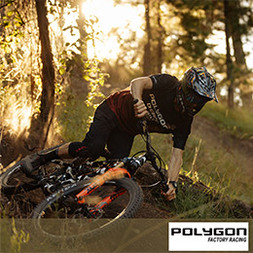What’s the Difference Between a Schrader Valve and a Presta Valve?
EVERYTHING YOU SHOULD KNOW ABOUT THE VALVES ON YOUR BIKE.
.jpg)
For such a small component, the bike tire valve plays a significant role in ensuring the overall success of a ride. Furthermore, it requires more knowledge than one might assume to use correctly.
You may notice when you pump your tires that some bikes have a familiar Schrader valve (the same kind found on cars), while others come with a slender, exotic model known as the Presta valve. Why do different bikes use different valve systems, and how do they compare to one another? Here’s everything you need to know about bike valves to keep rolling on a ride.
What types are there?
Bikes typically come with one of two types of valves. Schrader valves are more common; they’re the same as those used on cars and are found mostly on inexpensive bike models. Most higher-end bicycle tires, however, are inflated with a Presta valve, designed specifically for bikes. Here’s how to tell the difference:
.jpg)
Bicycle tubes with Presta, left, and Schrader, right, valves. angelsimonGetty Images
• Schrader:
Wider than a Presta valve and typically the same circumference top to bottom. Often wrapped in rubber when used on wheels. The outer wall is threaded to accept a cap or pump head. The pin in the center is a spring-loaded check valve that controls airflow in and out. Check valves are meant to allow airflow in only one direction; your Schrader-valve tube requires pressure on the inner pin to let air in.
• Presta:
About half as wide as a Schrader valve and made entirely of metal. They taper slightly toward the top, and some are threaded all the way down. The valve stem opens by unscrewing a knurled (textured) nut at the top. Unlike a Schrader, the system doesn’t use a check valve—it seals entirely based on pressure in the tube or tire. On many Presta valves, including those for use in tubeless systems, the entire core is removable. Take care when unscrewing the stem nut to not accidentally unscrew the entire core, which will let all the air out of the tire quickly.
• Bonus:
If you travel to the Netherlands or Asia, you may see a third type of valve, called the Woods, or Dunlop, valve. It looks like a fatter Presta and is often found on city bikes:
.jpg)
.jpg)
A Woods or Dunlop valve. nilszGetty Images
Where are they on my bike?
On the tires—and more specifically, jutting toward the hub on the inside of the rim. But you’ll also find Schrader fittings on suspensions: rear shocks and forks, as well as dropper seatposts. With droppers, the Schrader fitting is typically recessed inside the post itself.
Why do bikes use Presta valves?
Presta valves were invented by the same guy who went on to found Zéfal, one of the leading bike pump manufacturers. Compared to Schrader valves, Presta valves are ideally suited to bike wheels for many reasons:
- They require a smaller hole in the rim, which improves rim strength.
- They’re lighter, so high-performance wheels don’t need to be counterbalanced for the stem weight in order to spin smoothly.
- They seal tightly on air pressure alone, so there’s no need for a mechanical check valve like on Schrader systems (which can clog with debris).
- They are easily extendable with adaptors, making them ideal for deeper-section aerodynamic rims.
.jpg)
A Presta valve with the cap on. AFP ContributorGetty Images Can you mismatch tubes and valves?
You can put a Presta-specific tube in a rim drilled for Schrader valves, but it’s not advisable for anything more than an emergency fix. Tubes and tires tend to move slightly on the rim. In the wider Schrader hole, a Presta can move around enough that the rim will actually cut the tube at the base of the valve. If you must install a Presta tube in a Schrader rim to get home, use the valve nut to secure it close to the rim.
Meanwhile, the only way to put a Schrader tube in a Presta-drilled rim is to widen the valve hole—something we don’t recommend, as it may compromise the rim’s integrity.
Which pump should I use?
A Presta-only pump has a rubber gasket in the head, or chuck, that will fit snugly around a Presta valve but not a Schrader. A Schrader-only pump has a pin in the center of the chuck to depress the Schrader stem’s check valve. If you try to put it on a Presta tube, it simply won’t fit.
Many modern pumps feature dual-head designs. These come in three types:
•Twin head:
Found on some floor pumps, the chuck features separate gaskets for Presta and Schrader valves.
• Swappable head:
Found on some frame and mini-pumps, this head has a gasket with a conical hole. One side is narrower for Presta valves. Simply unscrew the chuck cap, flip the gasket to the side that matches the valve, and screw the cap back on.
• Adjustable head:
The newest and most common style, this heads fits Presta and Schrader valves without swapping any internal parts. Just press the head firmly onto the valve, flip the lever to secure, and start pumping.
You can’t use a tire pump on parts of your suspension or a suspension pump on tires. Tire pumps don’t typically reach the kind of pressure suspension elements need and lack the fine-tuning options that suspension pumps have. And suspension pumps are so small that it would take forever to inflate a Schrader tire.
.jpg)
Closeup of a disassembled Schrader valve. aquatarkusGetty Images
Will I ever need to replace a valve?
Most valves are already attached to tubes, so swapping one means replacing the whole tube. However, there are two scenarios that may require a valve replacement:
• Tubeless:
Presta valves for tubeless tires seal by a knurled nut that fixes the valve to the rim. If that seal ever fails and you’re losing air, you can just replace the valve. Some tubeless valves are specific to the wheel or rim model; make sure you’re getting the right replacement, or the gasket might not seal properly.
• Replaceable cores:
Some Prestas have replaceable cores that unscrew—key for adding valve extenders to aero rims, or for adding tire sealant (which can gum up the valve core if it’s not removed first). If your tire isn’t holding air, or if sealant has gummed up the core, you can simply swap it for a fresh one. Most local bike shops have replacement cores for sale. You’ll know your valve has replaceable cores if its sides have small, flat sections right as the valve tapers toward the top nut.
Read the full article here.
Comments (4)
Great info!
6 April 2022Ditto on the previous post. This valve primer was just what I needed to decide if I should switch. Delightful find
Thank you!
23 March 2022I’m new to bikes and this article on valves was super helpful. I appreciate it!
Exceptional Article
16 March 2022Concise, well-written, with the perfect pictures included to help the reader understand differences between both types of valves and pumps. In my case, I was gifted a pump meant for Schrader valves while my bike wheels use Presta. Thanks to your article I’ll swing by my local shop to see if they might sell some kind of adapter that would allow me to use the pump, but otherwise will buy the correct one as insurance in case I pop a tube on a long ride. Much appreciated!
Excellent Tour of Bike Tire Valves
9 February 2022Your explanation of the Presta and Schrader valves was exactly what I was looking for. Thanks for a concise, easy-to-understand read on tire valves.
Leave a comment
- Training Tips for a Beginner Cyclist
- Industry Reviews
- Pinned With Polygon | The gang goes to Crankworx
- Worth-it Blogs EP#2: Hardtail Hitters
- Commuter Bike Guide
- EWS #5: Burkville
- Bikes Online Does Sea Otter
- Sustainable Strategies
- Bikepacking 101
- Drop bar Buyer's Guide
- The Bicycles Online's Company Fitness Challenge
- Mountain Bikes Buyer's Guide
- Worth-it Blogs EP#3: Budget Hardtail Upgrades
 USA
USA AUS
AUS
























